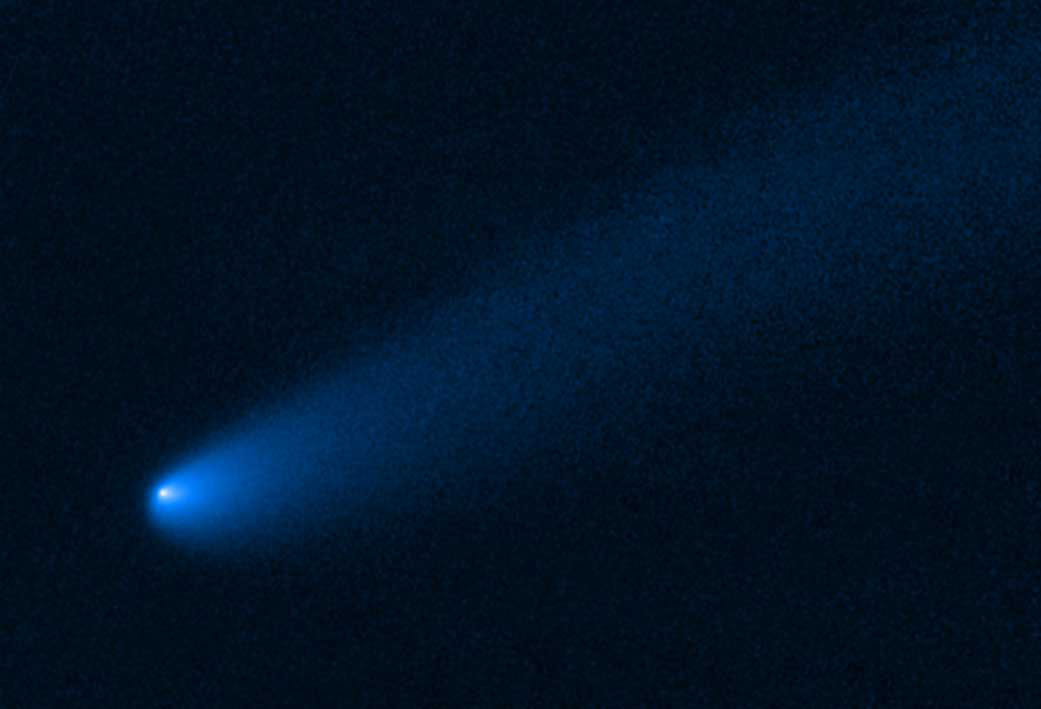NASA’s Hubble Space Telescope snapped this image of the young comet P/2019 LD2 as it orbits near Jupiter’s captured ancient asteroids, which are called Trojans. The Hubble view reveals a 400,000-mile-long tail of dust and gas flowing from the wayward comet’s bright solid nucleus. (NASA/ESA/J. Olmsted/STScI)
Home NASA’s Hubble Space Telescope snapped this image of the young comet P/2019 LD2 as it orbits near Jupiter’s captured ancient asteroids, which are called Trojans. The Hubble view reveals a 400,000-mile-long tail of dust and gas flowing from the wayward comet’s bright solid nucleus. (NASA/ESA/J. Olmsted/STScI) NASA's Hubble Space Telescope snapped this image of the young comet P/2019 LD2 as it orbits near Jupiter’s captured ancient asteroids, which are called Trojans. The Hubble view reveals a 400,000-mile-long tail of dust and gas flowing from the wayward comet's bright solid nucleus. (NASA/ESA/J. Olmsted/STScI)
NASA’s Hubble Space Telescope snapped this image of the young comet P/2019 LD2 as it orbits near Jupiter’s captured ancient asteroids, which are called Trojans. The Hubble view reveals a 400,000-mile-long tail of dust and gas flowing from the wayward comet’s bright solid nucleus. (NASA/ESA/J. Olmsted/STScI)



